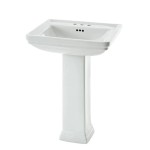Yellow Stains in Bathroom Sink Drains
Yellow stains in bathroom sink drains are a common household nuisance. While not always indicative of a severe problem, they can be unsightly and may point to underlying issues requiring attention. Understanding the causes of these stains allows for effective treatment and prevention.
Common Causes of Yellow Stains
Several factors contribute to the development of yellow stains in bathroom sinks. Identifying the source is crucial for proper remediation.
- Iron Bacteria: These bacteria thrive in moist environments and oxidize iron in water, leaving behind rust-colored or yellowish deposits. The stains may appear slimy and have a musty odor.
- Hard Water Minerals: High mineral content in water, particularly iron and manganese, can leave behind yellow or brownish stains as the water evaporates and leaves mineral deposits.
- Soap Scum and Grime Buildup: Soap residue combined with body oils, dirt, and other debris can accumulate in the drain, creating a yellowish film.
- Tannins from Water: Tannins are organic compounds found in some water sources, giving the water a yellowish or brownish tint. These tannins can stain the sink drain over time.
Distinguishing Between Different Types of Stains
Accurately identifying the stain's origin is vital for choosing the right cleaning method. Observing the stain's characteristics can provide clues to its source.
- Color: Iron bacteria stains are typically rusty orange or yellow, while hard water stains tend to be more light yellow or brownish.
- Texture: Iron bacteria often create slimy, viscous stains. Hard water stains and soap scum are usually drier and more flaky.
- Odor: A musty or swampy odor often accompanies iron bacteria.
Cleaning Methods for Yellow Stains
Various cleaning methods can effectively remove yellow stains, depending on the underlying cause. It's critical to choose a method appropriate for the type of stain.
- Baking Soda and Vinegar: This common household mixture creates a fizzing action that can help dislodge soap scum and grime. Pour baking soda down the drain, followed by vinegar, and allow it to fizz before rinsing with hot water.
- Commercial Drain Cleaners: These cleaners contain chemicals that can dissolve soap scum, hair, and other organic matter. Follow the manufacturer's instructions carefully, as some cleaners can damage certain types of plumbing.
- Bleach: Diluted bleach can help remove stains caused by iron bacteria and other organic matter. Pour a solution of bleach and water down the drain and let it sit for a while before rinsing thoroughly.
- Hydrogen Peroxide: A less harsh alternative to bleach, hydrogen peroxide can also help eliminate stains and kill bacteria. Pour it down the drain and allow it to sit for a few hours before rinsing.
Preventing Yellow Stains
Proactive measures can help prevent yellow stains from forming in the first place, reducing the need for frequent cleaning.
- Regular Cleaning: Flush the drain with hot water after each use to help prevent the buildup of soap scum and grime. Periodically clean the drain with baking soda and vinegar or a commercial drain cleaner.
- Water Softener: Installing a water softener can reduce the mineral content in hard water, preventing mineral buildup in the drain.
- Hair Catcher: Using a hair catcher in the drain can prevent hair and other debris from accumulating and contributing to stain formation. Clean the hair catcher regularly.
Addressing Persistent Stains
If yellow stains persist despite regular cleaning, it may indicate a more serious issue such as a plumbing problem or a persistent iron bacteria infestation. In such cases, professional assistance may be required.
- Plumbing Inspection: A plumber can inspect the pipes for any underlying issues contributing to the staining. This may include corrosion, leaks, or buildup within the pipes.
- Professional Cleaning: Plumbers have access to specialized tools and cleaning solutions that can effectively remove stubborn stains and address underlying issues.
Importance of Proper Ventilation
Adequate ventilation in the bathroom can help reduce moisture buildup, which can contribute to the growth of bacteria and the formation of stains. Ensure proper ventilation by running the exhaust fan during and after showers and baths.
- Reduce Moisture: Controlling humidity levels discourages the growth of bacteria and mold, which can contribute to stains and odors.
- Prevent Condensation: Proper ventilation minimizes condensation on surfaces, reducing the likelihood of mineral deposits and stain formation.
Materials and Their Susceptibility to Staining
Different sink materials exhibit varying susceptibility to staining. Understanding the properties of your sink material can inform cleaning practices and prevent damage.
- Porcelain: Porcelain sinks are generally resistant to staining but can discolor over time if not cleaned regularly.
- Acrylic: Acrylic sinks are more prone to scratching and staining than porcelain. Avoid abrasive cleaners that can damage the surface.
- Stainless Steel: Stainless steel sinks are relatively stain-resistant but can develop water spots if not dried properly.

How To Get Rid Of Iron And Rust Stains Once For All Water Right

Identifying Your Home S Water Staining Problems Easywater

No More Hard Water Stains How To Easily Clean Your Porcelain Sink In Minutes Vooki

How To Remove Stains From A Porcelain Sink Isavea2z Com

How Did I Get Rust Stains In My Sink Benjamin Franklin Dallas

What Does Iron In Water Look Like Culligan

How Do I Remove This Embedded Stain From Bathroom Sink Hometalk

How Do I Clean A Rusty Bathtub Hometalk

How Do You Remove Stains From Culture Marble Fixtures Hometalk

Make Your Own Drain Cleaner At Home Kdhnews Com
Related Posts







